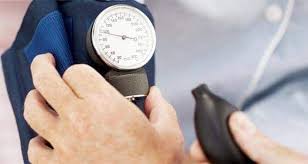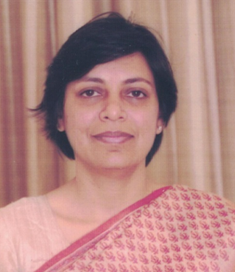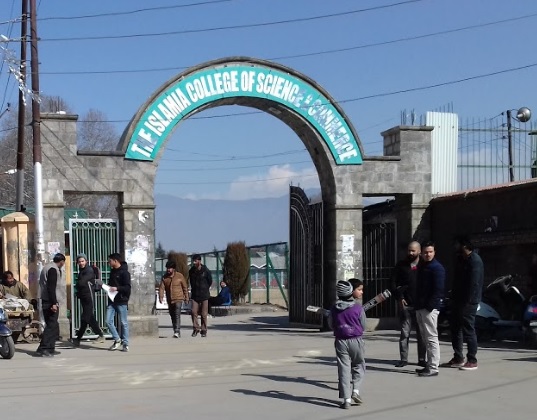HEALTH WATCH
Hypertension is high blood pressure. Blood pressure is the force of blood pushing against the walls of arteries as it flows through them. Arteries are the blood vessels that carry oxygenated blood from the heart to the body’s tissues. As blood flows through arteries it pushes against the inside of the artery walls. The more pressure the blood exerts on the artery walls, the higher the blood pressure will be. The size of small arteries also affects the blood pressure. When the muscular walls of arteries are relaxed, or dilated, the pressure of the blood flowing through them is lower than when the artery walls narrow, or constrict.
Blood pressure is highest when the heart beats to push blood out into the arteries. When the heart relaxes to fill with blood again, the pressure is at its lowest point. Blood pressure when the heart beats is called systolic pressure. Blood pressure when the heart is at rest is called diastolic pressure. When blood pressure is measured, the systolic pressure is stated first and the diastolic pressure second. Blood pressure is measured in millimeters of mercury (mm Hg). For example, if a person’s systolic pressure is 120 and diastolic pressure is 80, it is written as 120/80 mm Hg. The American Heart Association considers blood pressure less than 140 over 90 normal for adults.
Hypertension is a major health problem, especially because it has no symptoms. Many people have hypertension without knowing it. Hypertension is more common in men than women and in people over the age of 65 than in younger persons. Hypertension is serious because people with the condition have a higher risk for heart disease and other medical problems than people with normal blood pres- sure. Serious complications can be avoided by getting regular blood pressure checks and treating hypertension as soon as it is diagnosed.
If left untreated, hypertension can lead to the following medical conditions:
- Arteriosclerosis, also called atherosclerosis.
- Heart attack.
- Stroke.
- Enlarged heart.
- Kidney damage.
Arteriosclerosis is hardening of the arteries. The walls of arteries have a layer of muscle and elastic tissue that makes them flexible and able to dilate and constrict as blood flows through them. High blood pressure can make the artery walls thicken and harden. When artery walls thicken, the inside of the blood vessel narrows. Cholesterol and fats are more likely to build up on the walls of damaged arteries, making them even narrower. Blood clots can also get trapped in narrowed arteries, blocking the flow of blood.
Arteries narrowed by arteriosclerosis may not deliver enough blood to organs and other tissues. Reduced or blocked blood flow to the heart can cause a heart attack. If an artery to the brain is blocked, a stroke can result.
Hypertension makes the heart work harder to pump blood through the body. The extra workload can make the heart muscle thicken and stretch. When the heart becomes too enlarged it cannot pump enough blood. If the hypertension is not treated, the heart may fail.
The kidneys remove the body’s wastes from the blood. If hypertension thickens the arteries to the kidneys, less waste can be filtered from the blood. As the condition worsens, the kidneys fail and wastes build up in the blood. Dialysis or a kidney transplant is needed when the kidneys fail. About 25% of people who receive kidney dialysis have kidney failure caused by hypertension.
Causes and symptoms
Many different actions or situations can normally raise blood pressure. Physical activity can temporarily raise blood pressure. Stressful situations can make blood pressure go up. When the stress goes away, blood pressure usually returns to normal. These temporary increases in blood pressure are not considered hypertension. A diagnosis of hypertension is made only when a person has multiple high blood pressure readings over a period of time.
The cause of hypertension is not known in 90 to 95 percent of the people who have it. Hypertension without a known cause is called primary or essential hypertension. When a person has hypertension caused by another medical condition, it is called secondary hypertension. Secondary hypertension can be caused by a number of different illnesses. Many people with kidney disorders have secondary hypertension. The kidneys regulate the balance of salt and water in the body. If the kidneys cannot rid the body of excess salt and water, blood pressure goes up. Kidney infections, a narrowing of the arteries that carry blood to the kidneys, called renal artery stenosis, and other kidney disorders can disturb the salt and water balance.
Even though the cause of most hypertension is not known, some people have risk factors that give them a greater chance of getting hypertension. Many of these risk factors can be changed to lower the chance of developing hypertension or as part of a treatment program to lower blood pressure.
Risk factors for hypertension include:
- Age over 60.
- Male sex.
- Race.
- Heredity.
- Salt sensitivity.
- Obesity.
- Inactive lifestyle.
- Heavy alcohol consumption.
- Use of oral contraceptives.
Some risk factors for getting hypertension can be changed, while others cannot. Age, male sex, and race are risk factors that a person can’t do anything about. Some people inherit a tendency to get hypertension. People with family members who have hypertension are more likely to develop it than those whose relatives are not hypertensive. A person with these risk factors can avoid or eliminate the other risk factors to lower their chance of developing hypertension.
Diagnosis
Because hypertension doesn’t cause symptoms, it is important to have blood pressure checked regularly. Blood pressure is measured with an instrument called a sphygmomanometer. A cloth-covered rubber cuff is wrapped around the upper arm and inflated. When the cuff is inflated, an artery in the arm is squeezed to momentarily stop the flow of blood. Then, the air is let out of the cuff while a stethoscope placed over the artery is used to detect the sound of the blood spurting back through the artery. This first sound is the systolic pressure, the pressure when the heart beats. The last sound heard as the rest of the air is released is the diastolic pressure, the pressure between heart beats. Both sounds are recorded on the mercury gauge on the sphygmomanometer.
Normal blood pressure is defined by a range of values. Blood pressure lower than 140/90 mm Hg is considered normal. A blood pressure around 120/80 mm Hg is considered the best level to avoid heart disease. A number of factors such as pain, stress or anxiety can cause a temporary increase in blood pressure. For this reason, hypertension is not diagnosed on one high blood pressure reading. If a blood pressure reading is 140/90 or higher for the first time, the physician will have the person return for another blood pressure check. Diagnosis of hypertension usually is made based on two or more readings after the first visit.
Systolic hypertension of the elderly is common and is diagnosed when the diastolic pressure is normal or low, but the systolic is elevated, e.g.170/70 mm Hg. This condition usually co-exists with hardening of the arteries (atherosclerosis). The medical and family history help the physician determine if the patient has any conditions or disorders that might contribute to or cause the hypertension. A family history of hypertension might suggest a genetic predisposition for hypertension.
The physical exam may include several blood pressure readings at different times and in different positions. The physician uses a stethoscope to listen to sounds made by the heart and blood flowing through the arteries. The pulse, reflexes, and height and weight are checked and recorded. Internal organs are palpated, or felt, to determine if they are enlarged. Because hypertension can cause damage to the blood vessels in the eyes, the eyes may be checked with a instrument called an ophthalmoscope. The physician will look for thickening, narrowing, or hemorrhages in the blood vessels.
Treatment
There is no cure for primary hypertension, but blood pressure can almost always be lowered with the correct treatment. The goal of treatment is to lower blood pressure to levels that will prevent heart disease and other complications of hypertension. In secondary hypertension, the disease that is responsible for the hypertension is treated in addition to the hypertension itself. Successful treatment of the underlying disorder may cure the secondary hypertension.
Treatment to lower blood pressure usually includes changes in diet, getting regular exercise, and taking antihypertensive medications. Patients with mild or moderate hypertension who don’t have damage to the heart or kidneys may first be treated with lifestyle changes.
Patients whose blood pressure remains higher than 139/90 will most likely be advised to take antihypertensive medication. Numerous drugs have been developed to treat hypertension. The choice of medication will depend on the stage of hypertension, side effects, other medical conditions the patient may have, and other medicines the patient is taking.
Patients with mild or moderate hypertension are initially treated with monotherapy, a single antihypertensive medicine. If treatment with a single medicine fails to lower blood pressure enough, a different medicine may be tried or another medicine may be added to the first. Patients with more severe hypertension may initially be given a combination of medicines to control their hypertension. Combining antihypertensive medicines with different types of action often controls blood pressure with smaller doses of each drug than would be needed for monotherapy.
Prognosis
There is no cure for hypertension. However, it can be well controlled with the proper treatment. Therapy with a combination of lifestyle changes and antihypertensive medicines usually can keep blood pressure at levels that will not cause damage to the heart or other organs. The key to avoiding serious complications of hypertension is to detect and treat it before damage occurs. Because antihypertensive medicines control blood pressure, but do not cure it, patients must continue taking the medications to maintain reduced blood pres- sure levels and avoid complications.
Prevention
Prevention of hypertension centers on avoiding or eliminating known risk factors. Even persons at risk because of age, race, or sex or those who have an inherited risk can lower their chance of developing hypertension. The risk of developing hypertension can be reduced by making the same changes recommended for treating hypertension; reducing salt intake, reducing fat intake, losing weight, getting regular exercise, quitting smoking, reducing alcohol consumption and managing stress.
(Author is a Medical Practitioner and can be reached on: [email protected])








